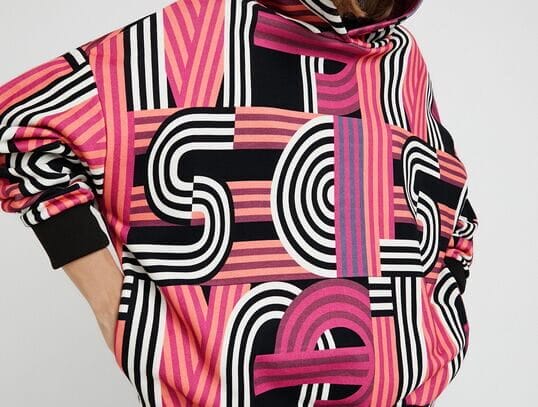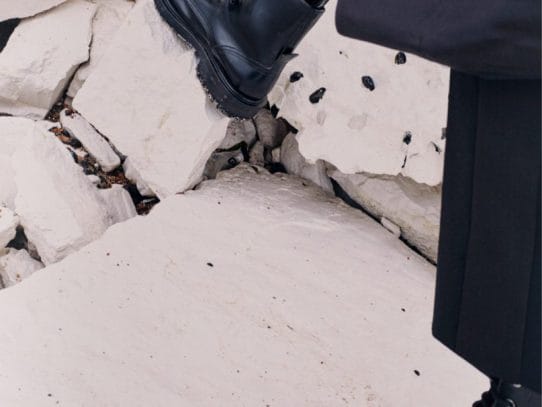David Beckham embodies the perfect blend of sophistication and modern style in BOSS. With sharp tailoring and effortless charm, his partnership with the iconic menswear brand redefines what it means to elevate your wardrobe with timeless, versatile pieces
A Brief History of Hugo Boss
Hugo Boss was founded in 1924 in Metzingen, Germany, originally producing uniforms and later evolving into one of the world’s premier luxury menswear brands. The company has always been known for its impeccable tailoring, minimalist designs, and use of high-quality materials. Over the years, Hugo Boss has expanded into casual-wear, sportswear, and fragrances, becoming a global fashion powerhouse that consistently aims to stay ahead of the curve.


Today, the brand continues to evolve with modern tastes while staying true to its roots of craftsmanship and quality. Whether it’s a three-piece suit or a casual jacket, Hugo Boss garments are synonymous with style, sophistication, and durability.
Athletes and Menswear: A Winning Team in Fashion
Athletes and fashion brands have increasingly joined forces to create iconic collections that blend sports performance with high-end style. This collaboration is more than just marketing—it’s about creating products that resonate with both fans and fashion lovers alike. But did you know who was the first athlete to ever partner with a fashion brand, and when and where this groundbreaking event occurred?
The First Athlete-Fashion Partnership in History
The first recorded instance of an athlete teaming up with a fashion brand dates back to 1936, when tennis legend René Lacoste partnered with French sportswear brand La Chemise Lacoste. Lacoste, known as “The Crocodile” on the tennis courts, designed a revolutionary polo shirt that became an instant classic. The brand’s famous logo—a small green crocodile—marked the first time a sports figure’s nickname became part of a global fashion symbol. This collaboration not only created a new standard for casual luxury but also laid the foundation for future athlete-fashion partnerships.
David Beckham: Setting the Gold Standard
Fast forward to modern times, and one athlete who has truly mastered the crossover between sports and fashion is soccer icon David Beckham. Beckham’s career is legendary, with 115 caps for the England national team, winning league titles in four different countries, and his status as one of the world’s most marketable athletes. But what sets him apart from other athletes is his undeniable sense of style and fashion-forward mindset, which helped him transcend the world of sports and establish his own brand.
In 2014, Beckham partnered with Hugo Boss, one of the leading names in menswear, to create a capsule collection that seamlessly blended his personal style with the brand’s craftsmanship. This partnership was a natural fit—Beckham’s polished yet modern look mirrored the sleek, refined image Hugo Boss has been known for. His ability to carry off tailored suits, streetwear, and sportswear with equal ease turned him into an ideal ambassador for the menswear industry.
5 Key Benefits of Athlete-Menswear Partnerships
- Authentic Appeal – Athletes, especially those with strong personal brands, bring an element of authenticity to fashion. They live in the clothes they promote, making them relatable to fans.
- Increased Visibility – Athlete endorsements guarantee high levels of visibility across global markets. Their fan bases are often extremely loyal and will follow their style choices closely.
- Crossover Appeal – Athletes have the ability to bring in customers who might not traditionally buy fashion, creating a broader demographic for the brand.
- Lifestyle Connection – By wearing and promoting menswear brands, athletes showcase a lifestyle that many men aspire to, from casual looks to red carpet attire.
- Credibility and Trust – Athletes are seen as strong, disciplined, and hardworking figures. These attributes are often transferred to the brands they represent, enhancing the perceived quality and trustworthiness of the products.


The Beckham Collection: Bridging Sports and Style
David Beckham’s collaboration with Hugo Boss epitomizes how the sports and fashion worlds can come together to create a collection that resonates with today’s man. The collection features everything from sharp, tailored suits to casual wear, appealing to a wide audience of men who value versatility and modernity in their wardrobe. At the point of sale, Beckham’s name alone draws in customers, but it’s the quality and style of the pieces that ultimately convert browsers into buyers.


In my opinion, this collection will be particularly successful because it speaks directly to men looking for both function and fashion. The pieces offer comfort without sacrificing style, which is exactly what men want in a post-pandemic world where loungewear and business attire are often blurred.
Conclusion: Athletes and Fashion—A Perfect Fit
The partnership between athletes and menswear brands is more than a trend—it’s a winning formula that combines star power with high-quality fashion. Whether it’s David Beckham’s iconic collection with Hugo Boss or the first-ever collaboration between René Lacoste and his namesake brand, these partnerships have paved the way for athletes to influence men’s style in profound ways. For men looking to elevate their wardrobe, collections like Beckham’s with Hugo Boss offer an ideal mix of performance, style, and heritage.
As menswear continues to evolve, expect to see more athletes stepping into the world of fashion, proving once again that sports and style are a perfect match.
About the Author:
Joseph DeAcetis is a visionary in the world of fashion, renowned as the best wardrobe stylist and art director of his generation. His impressive accolades and unmatched expertise set him apart in the industry. Joseph covers the intersections of style, culture, art, and fashion, with a particular emphasis on the evolving status of menswear.
Throughout his illustrious career, Joseph has penned award-winning columns for top-tier publications such as Esquire, People Magazine, Robb Report, and Playboy. His profound insights and engaging narratives have made him a leading voice in fashion journalism.
Most recently, Joseph served as the creative fashion director for Forbes Media, where he excelled as both a critic and reporter. His extensive body of work highlights the importance of dressing for success and explores how technological advancements are reshaping the fashion industry. Joseph’s authoritative yet approachable voice continues to inspire and influence fashion enthusiasts worldwide.
Comments, questions, or feedback? message me at stylelujo.com
Save Article










